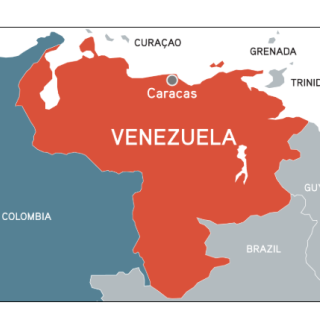Readers of my Columbus Free Press essays, especially those who live far from the city, ask me why I remain in a city without history, identity, city services, or democratic government; in a neighborhood whose decline is fostered by the City and the adjacent mega-university; and in association with the large mismanaged and disorganized university. After 18 years, I first reacted with surprise. Our daily lives are mostly comfortable, especially outside the weekend rumbles of OSU undergraduates. We are settled as retired professionals who planned responsibly. But direct questions from long-time friends give me pause.
I begin to respond here. In the larger context, it is difficult to move in our 70s with four stories of books, despite recently having had 3 truckloads of more than 50 years of accumulated paper hauled to recycling. Second, if I were to leave, it would be away from the right-wing dominated radically undemocratic failing state of Ohio with no Democratic Party to speak of, and very possibly the US on the verge of losing its almost two-and-a-half century experiment with democracy. Neither resembles the history I studied and taught for a half-century, nor the Ohio to which I moved in 2004.
For now, I choose to remain in Columbus, Ohio (unrecognizable to the outside world without citing its state) and which struggles over the proper resting place for its statues of Christopher Columbus. We are mostly comfortable in our 107-year old historic house in the once-proud, always mixed adult and student University District historical neighborhood from which I walked less than 10 minutes to my Ohio State office.
The aspirational “big city”—Andy Ginther’s fictional “Opportunity City [for some],” now 14th largest in the US--plays small in its patterns of personal living and much else. That is an advantage on certain levels, and a failure on others. Columbus reality, like so much else about the town, is contradictory. Local lives are shaped in between the opposing dialectical elements. They pivot around disconnection-connection; disorganization-organization; lack of communication-communication especially without public-oriented trustworthy local media; and absence of commitments to the public.
My essays in Columbus Free Press and national publications speak in detail to the failures. They define the 220-year old mélange of neighborhoods without representation or unifying policies. Tragically, they unite with Columbus’ irresponsible media’s inability to report accurately and honestly about the city.
After 18 years as active participants in Columbus’ higher education, neighborhood, urban affairs, cultural activities, and creating and directing the unique university-wide interdisciplinary initiative LiteracyStudies@OSU that reached into the community, we are well-connected institutionally and personally. This persists even though OSU now forbids senior administrators who had sought my counsel and proclaimed their friendship from further communication with me. This is the immature institution’s response to its public, always documented critic, ironically confirming my arguments.
Our lives are rich with continuing and new OSU friendships: peers retired and still active on the faculty across the sprawling university; staff; former students, many now close friends; and present students, many of them neighbors with diverse and unpredictable patterns of connections. Some are colleague/friends for decades, long before we moved to Columbus/OSU; with others we developed relationships during employment 2004-2016; and a growing number of faculty and students new to 2020-2022, across all categories.
The lines of contact, connection, and friendship are as varied as they are significant. The longer-term patterns are familiar with the exception of their unusual degree of crossing lines between departments and colleges, and faculty, staff, and students. For us, these are life-long patterns from childhood and adolescence, college and graduate education; and almost a half-century of work.
Common, connecting interests evolve. Some are predictable; some are not. For my wife and me, they come with our work and neighborhood relationships, which overlapped with each other. We purchased our house because the next-door neighbors, both OSU professors, led us to it. One of them, then director of the Humanities Institute and active in recruiting me, pointed it out on my first visit to consider accepting a newly endowed professorship. Despite our university “appointed” realtor’s and OSU people’s view that we should live in Upper Arlington or Worthington, not the University District, we persevered and purchased the house we love.
It sits in an enclave of older homeowners, most of whom have OSU connections and some of whom contributed actively to LiteracyStudies@OSU. Some relationships deepened while the Indianola-Forest Homeowners group still functioned. Some of my students presented their local research. Varied patterns of close relationships develop that linked personal friendships and neighborhood activism in confronting the City, OSU, the large landlords, and their student tenants.
Over the years and especially since retirement and the pandemic, we make more 20-22 year-old student-friends. Most of them long for connections and adult friendships. They are abandoned by OSU academic and student life, and too often extorted by landlords. They feel “burned out” by parental and social pressures to succeed in very narrow terms, rushing to “grow up” far too quickly by themselves in isolation. As I have detailed throughout Busting Myths, life and lives in the University District are ongoing struggles.
Our close friends include future environmental lawyers, computer scientists, engineers, health system shapers, and non-profit organization employees. As we share with them, they are an unexpected cross between grandchildren, students, and close friends. How wonderful to meet them on sidewalks and front porches, and in dining and living rooms, not in four-walled classrooms with grading and RateMyProfessor. How appropriate for a retiring university professor and his former teacher spouse. My wife and close friends tease me about running Harvey U.: no tuition, no debt, very small classes, mutual teaching and learning, no grades, and historical foundations for all subjects. I take pleasure in connecting them to each other and to adult activists and groups, respecting environmental action, for example.
Another largely-local pleasure is our growing extended family of surrogate grandchildren, the daughters and sons of younger colleagues and former students. Aged from 1-2 into their teens, they are a joy. Along with our four generations of robot pets who replaced our last dog (who died with a heart pacemaker 9 years ago), they follow a lifetime of cats and dogs. We meet in parks, root their soccer matches, read, write, discuss current issues, eat, and play together. They give us hope.
Among Columbus’ few distinguishing features are its many excellent and diverse restaurants. I am not referring to the testing sites for national chains for which Columbus is especially well-known, or its multitude of constantly opening and closing theme bars replete with drunkenness and robberies. No, I mean the broad middle-range of ethnic, natural and healthy foods, New American-Italian-Spanish mixes that have survived the pandemic.
Columbus’s semi-French fine dining sector is all but gone. But many very good, responsible, and customer-respecting spots remain. Although my wife and I have ceased dining indoors outside our home, we take pains to support old and newer favorites through takeout. We share these meals with small numbers of friends including surrogate grandchildren at our homes for breakfast, lunch, or dinner. During the pandemic, we finally learned that if each party orders and pays for its own share, one person can pick the food up with no crisis over making correct change. We’ve also learned to order enough for two dinners for ourselves.
Although the city’s physical site prompts little comment, running through the University District and Clintonville is a series of natural ravines—former streams--that together constitute one of Columbus’ natural beauties. Maintained at least as much by nearby residents’ volunteer labor as the City, they contrast starkly with the City’s and private interests’ collusion in the environmental assault on the Scioto River banks and peninsula, and the self-promotional imaginings about Rapid 5’s remaking Columbus into a new Amsterdam or Florence for the advancement of developers and private profiteers.
These urban attributes inadequately substitute for the distinctive resident-linking, visitor-attracting, and enriching social and cultural institutions that Columbus largely lacks. Columbus does not compete with Cleveland or Cincinnati, or even Toledo and Akron in the arts. The Arnold Bodybuilding “Classic,” high on steroids, and OSU Buckeye football do not compensate for lack of nationally-noted artistic, cultural, intellectual, historical, musical, theatrical, and dance. (COSI’s acclaim rests on quantities of local ratings.)
Columbus lacks the intergenerational amassed wealth, philanthropic traditions and private-public support of the Cleveland Museum of Art (the real CMA), the Cincinnati Museum of Art and Modern Art Center, and the Cleveland Symphony Orchestra, or even the Rock and Roll Hall of Fame.
Thus, personal connections, which the city and the City do little formally to promote, and the threatened neighborhoods and natural environment underlie Columbus’ community connections. City Government, self-advancing Partnerships, and local institutions have no ability to see or advance the city as a whole.
To an increasing and developing extent, political, social, economic, and cultural activism partially intervenes. I have been pleasantly surprised, indeed impressed, by my steadily growing number and range of contacts, acquaintances, and friends who have flowed first from my efforts to influence City Hall and City council, and the residents who contact me in response to my Columbus Free Press essays. They give me the unusual pleasures of connecting fellow residents who do not meet institutionally or residentially but who share values, concerns, and aspirations for their city or cities.
For example, in one week in August, I had an evening with a Sunrise Columbus young environmental activist; an afternoon meeting with four diverse affordable housing activists from different sectors of the city; and either dinner or coffee with future activist lawyers and medical transformers.
Will the pieces of this disorganized private dominated Columbus jig-saw puzzle ever fit together? Probably not. At the same time, Columbus residents must keep trying. We do have the basis for some hope for some change. We must keep that in mind.
--------------------------------------
Harvey J. Graff is Professor Emeritus of English and History at The Ohio State University and inaugural Ohio Eminent Scholar in Literacy Studies. Author of many books on social history, the history of literacy and education, and interdisciplinarity, he writes about the history and contemporary conditions for Times Higher Education, Inside Higher Education, Academe Blog, Washington Monthly, Publishers Weekly, Against the Current; Columbus Free Press, and newspapers. Searching for Literacy: The Social and Intellectual Origins of Literacy Studies is published by Palgrave Macmillan in August. My Life with Literacy: The Continuing Education of a Historian. The Intersections of the Personal, the Political, the Academic, and Place is forthcoming. Steve Weissman and Paul Mattingly prompted these reflections. He thanks Columbus friends, long- and short-term neighbors, former students, and colleagues of all ages and orientations.



